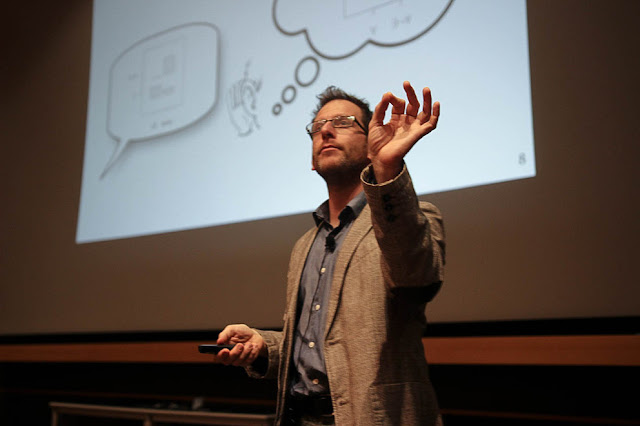Roger Levy: Bayesian Pragmatics: Lexical Uncertainty, Compositionality, and the Typology of Conversational Implicature
This just in: the second joint CSE/IST Colloquium on Natural Language Processing!
Bayesian Pragmatics: Lexical Uncertainty, Compositionality, and the Typology of Conversational Implicature
A central scientific challenge for our understanding of human cognition is how language simultaneously achieves its unbounded, yet highly context-dependent expressive capacity. In constructing theories of this capacity, it has been productive to distinguish between strictly semantic content, or the “literal” meanings of atomic expressions (e.g., words) and the rules of meaning composition and pragmatic enrichment, by which speakers and listeners can rely on general principles of cooperative communication to take understood communicative intent far beyond literal content. Major open questions remain, however, of how to formalize pragmatic inference and characterize its relationship with semantic composition. Here I describe recent work within a Bayesian framework of interleaved semantic composition and pragmatic inference.
First, I show how two major principles of Levinson’s typology of conversational implicature fall out of our models: Q(uantity) implicature, in which utterance meaning is refined through exclusion of the meanings of alternative utterances; and I(nformativeness) implicature, in which utterance meaning is refined by strengthening to the prototypical case. Q and I are often in tension; I show that the Bayesian approach derives quantitative predictions regarding their relative strength in interpretation of a given utterance and present evidence supporting these predictions from a large-scale experiment on interpretation of utterances such as “I slept in a car” (was it my car, or someone else’s car?). I then turn to questions of compositionality, focusing on two of the most fundamental building blocks of semantic composition, the words “and” and “or”. Canonically, these words are used to coordinate expressions whose semantic content is least partially disjoint (“friends and enemies,” “sports and recreation”), but they can also be used to coordinate expressions whose literal semantic content is in a one-way inclusion relation (“boat or canoe” — c.f. Hurford, 1974; “roses and flowers”) or even in a two-way inclusion relation, or total semantic equivalence (“oenophile or wine-lover.”)
But why are these latter coordinate expressions used and how are they understood? Each class of these latter expressions falls out as a special case of our general framework, in which their prima facia inefficiency for communicating their literal content triggers a pragmatic inference that enriches the expression’s meaning in the same ways that we see in human interpretation. More broadly, these results illustrate the value of integrating recursive probabilistic models with formal semantic theories in the study of linguistic meaning and communication.
Roger Levy is an Associate Professor in the Department of Brain and Cognitive Sciences at the Massachusetts Institute of Technology. His research focuses on theoretical and applied questions in the processing and acquisition of natural language. Linguistic communication involves the resolution of uncertainty over a potentially unbounded set of possible signals and meanings. How can a fixed set of knowledge and resources be deployed to manage this uncertainty? And how is this knowledge acquired? His research combines computational modeling, psycholinguistic experimentation, and analysis of large naturalistic language datasets. This work furthers our understanding of the cognitive underpinning of language processing and acquisition, and helps us design models and algorithms that will allow machines to process human language.
Find the story on Penn State News here.




Comments
Post a Comment